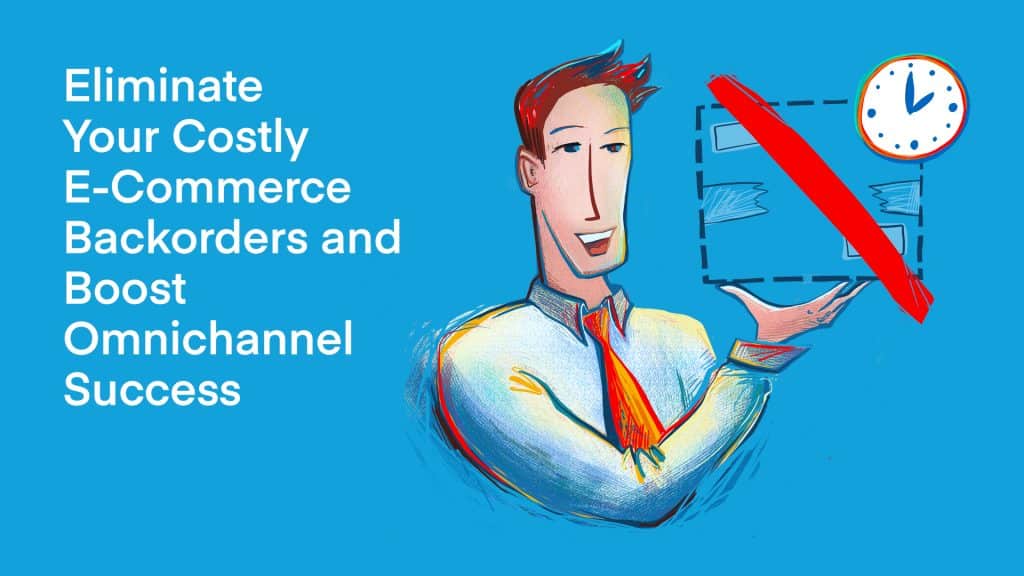
When customer demand outpaces your supply, your ecommerce business has a decision to make. Either you update your marketplace and website listings with an ‘Out of Stock’ (OOS) label until you can replenish your inventory, or you accept and fulfill backorders. You have to do something since failing to take action results in overselling—a practice that can cause a major hit to your customer approval ratings.
On the surface, selling through your stock seems like a great problem; interest in your products is growing and surpassing your inventory projections. In reality, it may also be indicative of a costly underlying problem. In this situation, you have to be prepared to address both the short-term and long-term issues.
The most pressing need is to keep interested customers on the hook. After all, you have buyers who have reached the bottom of the sales funnel and are ready to purchase. This is where backorders come in. They give you the option of accepting orders before you actually have the inventory on hand to fulfill them.
This is a common retail practice and something all omnichannel ecommerce sellers should be prepared to offer. That said, the ideal scenario is always having the inventory ready and available so that you can avoid asking customers to wait for a backorder in the first place.
Descartes Sellercloud’s catalog and inventory management features can help you handle backorders when needed and set up your ecommerce business to always have stock on hand to fulfill orders quickly and accurately.
How Do Ecommerce Backorders Work?
Backorders work slightly differently depending on where the sales originate. Backorder sales on your own website can be a viable option when you have more orders than inventory. First, you need a user-facing storefront or shopping cart capable of accepting backorders. Don’t assume that your ecommerce website automatically supports this functionality.
While you could simply accept all incoming orders and process backorders on the fulfillment backend, it is usually a best practice to inform customers upfront if their purchase contains a backordered item. This could go a long way toward avoiding customer service headaches down the road.
When a backorder comes in, you need to have a system in place to quickly create and place a purchase order with your supplier for the OOS inventory. From there, once the inventory is received, it should be promptly matched to the corresponding outstanding backorders.
Backorder sales on third-party sales channels can get a bit more complicated. Most third-party marketplaces use seller-provided inventory counts to help prevent overselling.
When the numbers dictate you have sold through your stock, a listing is typically marked as OOS. Naturally, this depends on both the accuracy of your inventory counts and the safeguards offered by the channels where you sell. Backorders may or may not be an option.
If providing backorders is a priority for your ecommerce business, be sure to explore how the channels where you sell handle them. Some marketplaces, like Amazon, have very specific guidance about what qualifies for backorders, while others don’t allow third-party sellers to offer backorders at all. The same is true for shopping cart partners.
One workaround some ecommerce sellers take to avoid OOS notices on marketplaces without backorder functionality is to inflate their marketplace inventory counts. This makes the listing appear to be in stock, but in reality, the seller must fulfill it as a backorder. Such a practice is not only dishonest, it is extremely risky.
It corrupts your inventory accuracy, puts an unnecessary strain on your logistics infrastructure, and breeds customer dissatisfaction. These types of overselling tactics are a recipe for customer service headaches, canceled orders, and marketplace suspensions and bans.
Descartes Sellercloud Makes Managing Your Backorders Simple
No matter where your backorders originate, Descartes Sellercloud’s omnichannel ecommerce platform can help you fill them swiftly and accurately. Our integrated backorder workflow features help you accept, fill, and process backorders in various ways.
When you receive backorders, you can first check the inventory quantities across all of your warehouses and fulfillment partners and reallocate stock as necessary. If you need to reorder merchandise, Descartes Sellercloud’s purchasing features allow you to generate and execute the necessary purchase orders.
As new inventory arrives, you can choose to fulfill backorders chronologically or manually allocate inventory based on backorder quantity or customer. In terms of fulfillment and shipping, you have several different backorder fulfillment options:
- Orders can be delayed so that an order ships once the backordered merchandise is available.
- Orders can be split so that available items ship as soon as possible. This prevents backordered items from delaying the fulfillment of the SKUs you have in stock. You will likely spend more on shipping, but it may be more convenient for the customer than waiting for a single shipment.
- Orders can be dropshipped directly from a vendor. In this case, you have a supplier ship the backordered product(s) directly to the customers. This streamlines the fulfillment process and eliminates the need for your warehouse team to order, receive, repack, and reship a backordered SKU to awaiting customers.
- Orders can be canceled outright. While this is not ideal, sometimes fulfilling a backorder becomes impossible or unreasonable. In these cases, the best course of action is to terminate the order, refund the customer, and eliminate the customer’s expectation that you will ship their purchase.
Throughout the fulfillment process, communication is key. Proactively sharing orders and shipping statuses enhances customer satisfaction; this is especially important with backorders.
Descartes Sellercloud’s Memaila collaboration and communication tool is extremely helpful for automating and tracking customer communication. Memaila empowers your customer service team to provide A+ service while giving customers the most up-to-date feedback on their orders.

Eliminating Backorders Altogether is Often the Best Option
There are some theoretical benefits to offering a backorder option to customers.
Backordered Inventory Doesn’t Have Any Holding Costs
Inventory expenses can quickly drive up the cost of goods sold (COGS) and eat into your bottom line. Other than processing and shipping, backorders don’t spend much time sitting in your warehouse.
Backorders Can Spur Sales
Inventory visibility is not only a strong modern ecommerce practice but can also create a sense of purchasing urgency as stock numbers begin to dwindle. One after-effect of pandemic ecommerce purchasing patterns is that buyers are more attuned to the consequences of limited availability.
Some see backorders as a sign that a product is so popular that it is worth waiting for. Why not allow customers to do so?
Backorders Can Eliminate Guesswork About Inventory Level ‘Sweet-Spots’
While you should routinely count inventory cycles and pay attention to your inventory turnover ratio (ITR), backorders are a surefire sign that you need to revisit your purchasing levels. While there are positives associated with ecommerce backorders, the pros of avoiding backorders typically outweigh the cons:
Backorders Represent Missed Sales Opportunities That Could Promote Your Competitors
While the fear of missing out (FOMO) will lead some customers to pounce on backordering an in-demand product, there is no way of telling how many customers your lack of stock scared away. In the era of 1- and 2-day shipping, a backorder status on your listing could lead impatient buyers to seek out your competitors instead.
Managing Backorders Takes Time and Resources Away from Other Areas of Your Ecommerce Business
Accepting a customer’s backorder implies a commitment to actively fulfilling the purchase agreement in a timely and reliable manner. Meeting these demands requires your entire team to divert attention away from your standard ordering, fulfillment, and customer-service workflows to clear the backlog.
The Hit to Customer Satisfaction Can Have Big-Picture Consequences
Backorders are fine if customer expectations are managed and satisfaction metrics remain high. However, if backorders negatively impact your metrics, it can compromise your standing on third-party marketplaces and your overall brand value.
Allowing backorders can be a useful ecommerce strategy, but in most cases, it makes sense to maintain enough inventory to avoid having to rely on them. You won’t have OOS issues driving away interested customers, and your sales will be able to reach their maximum heights.
Descartes Sellercloud’s inventory management tools can provide you with the stock metrics you need to be confident you can fulfill orders without delay. Low stock warnings and predictive purchasing options have you covered when sales spikes outpace your inventory projections.
Contact us directly for a free demo and see for yourself how Descartes Sellercloud can help you both manage and eliminate backorders in your omnichannel ecommerce business.




